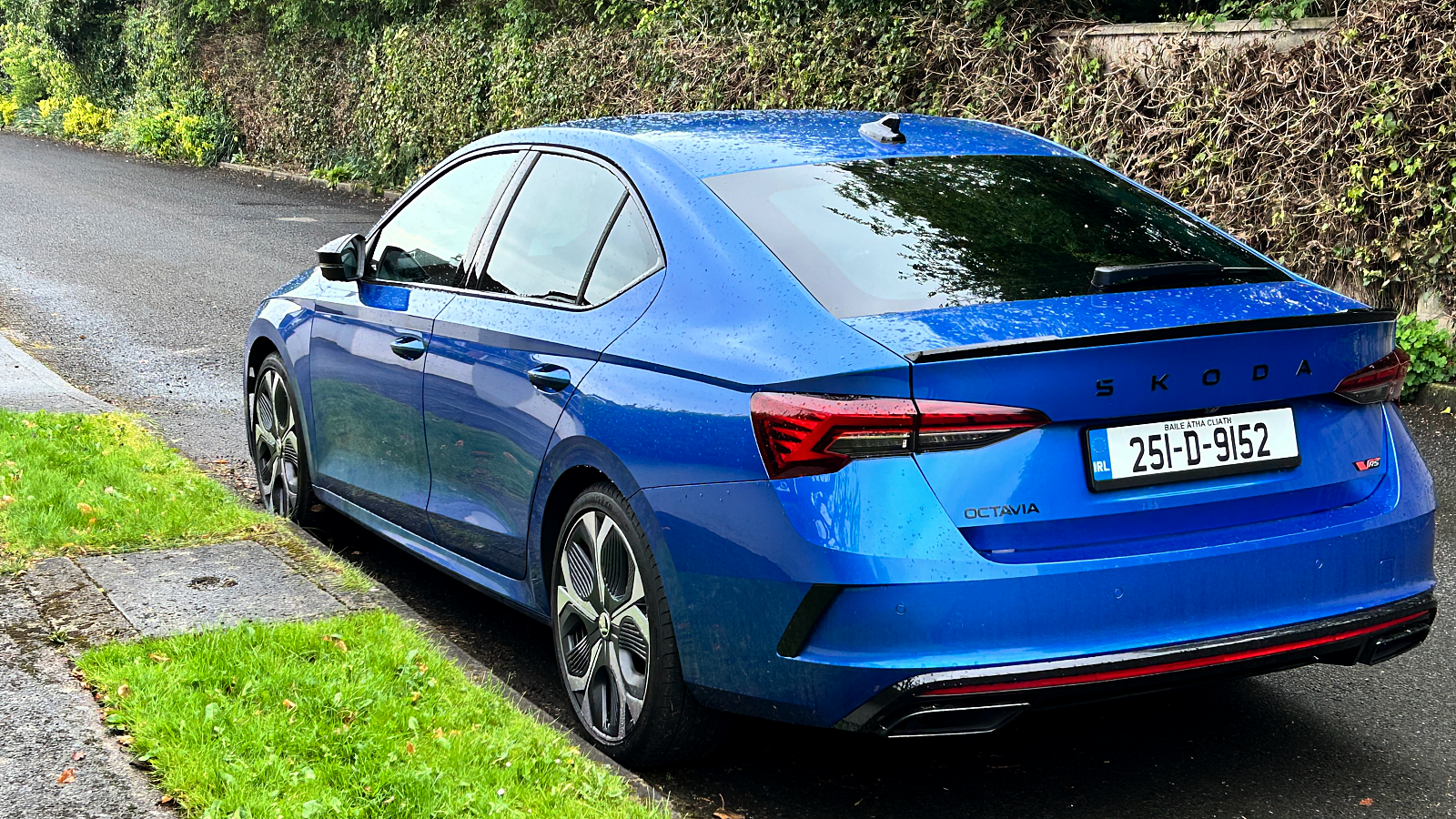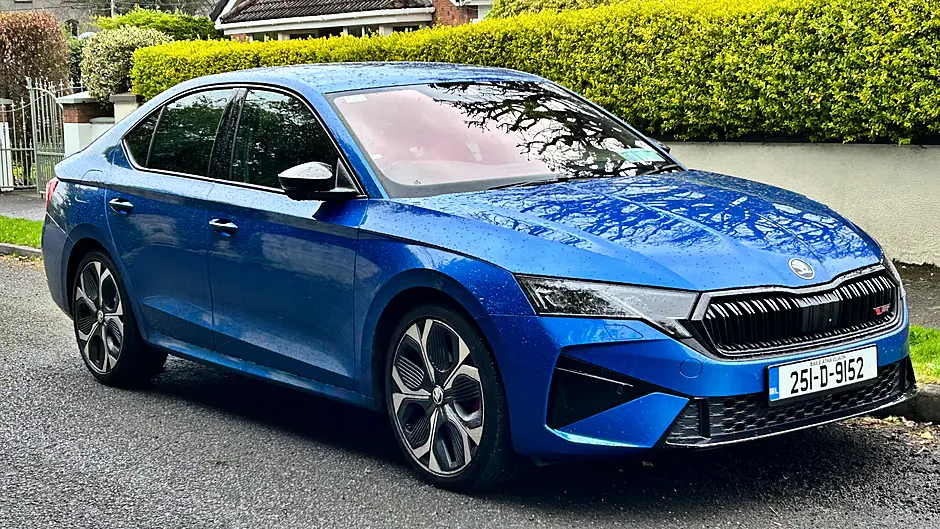In the scheme of things these days I’m driving a lot of cars that have plenty of power and punchy acceleration.
They’re almost all electric.
That’s not a criticism, I’m very much pro-EVs as regular readers will appreciate.
But I recently had time in what is possibly a dying breed, a modern performance petrol car with old-school credentials.
And it was a really enjoyable experience.
The Octavia vRS is the latest generation of a well-respected nameplate, more than 20 years on from its introduction as a 180hp performance family car with extra punch.
Now in its fourth iteration and with a facelift last year that included a 20hp performance bump, the Octavia vRS is a 265hp powerhouse.
For those long-time hot hatch heads, that’s the same engine as in the cousin current (and probably the last as we know it) VW Golf GTI.

Octavia has been a very successful model for Skoda since they first rolled it out more than seven million customers ago.
The current style continues the understated ethos which all versions have had, a saloon look with the cargo-loading advantage of a lift-back over a capacious boot.
Straight edges and just enough character line curving to soften the sharpness.
The refresh a year ago brought updates to the bumpers front and rear and to the grille, and there are new generation LED Matrix headlights standard in the vRS and animated indicators in the revised rear lights.
Unmistakably Octavia, unmistakably for today, and for quite a few tomorrows. The vRS has its own exterior black details.
They’ve gently added fresh elements and materials to the interior, including sustainable materials in the dashboard and trim panels.
The vRS gets an artificial leather seat trimming.
Octavia is technically in the C-segment family cars space, but extra room for those in the rear has always been a feature and remains so.
Be aware that, while getting in and out of the Octavia has never been an issue for me, the vRS suspension is 15mm lower than the standard car, so you have to stoop that little bit more.

All in all, the Octavia is a nice car place to be in. But of course, the vRS is about a bit more.
The 2.0 turbocharged engine is a familiar across the Volkswagen Group in a range of power outputs.
Well evolved, reliable, and smooth in any variation that I’ve driven. Even in this, one of its sportiest applications, it remains a quiet pussycat picking its way through slow traffic, tractable and refined.
When you want it quickly at max, notably in overtaking or on a busy motorway entry merge, it springs a feline leap that’s totally in control, just a tad of sound rasp to accompany the jump.
The seven-speed dual-clutch automatic shows really impressive fast changes under such pressure.

Years ago, putting this kind of ooomph onto a front-drive car would have resulted in scrabbling wheels and savage torque steer.
But today’s technology has totally tamed such behaviour and efficient transfer of horsepower to the tarmac is the order of the day.
Probably around six seconds to 100km/h is the sprint, not bad for a car that can double as sedate family transport at other times.
That latter is also made easy because the Octavia vRS’s suspension is not in any way hard, a matter that my passenger commented on during a run to the seaside while I had the car.
Coping with power and the handing that requires, and yet balancing the comfort needs is a Skoda speciality, I think.
The modern car is almost 140 years old.
The versions that we have been driving over the last 30 years or so are a far cry from the originals.
Now motoring is in the throes of the biggest powertrain change since the advent of the turbocharger, which itself will disappear in the process.
It’s nice to be able to still enjoy old school.










